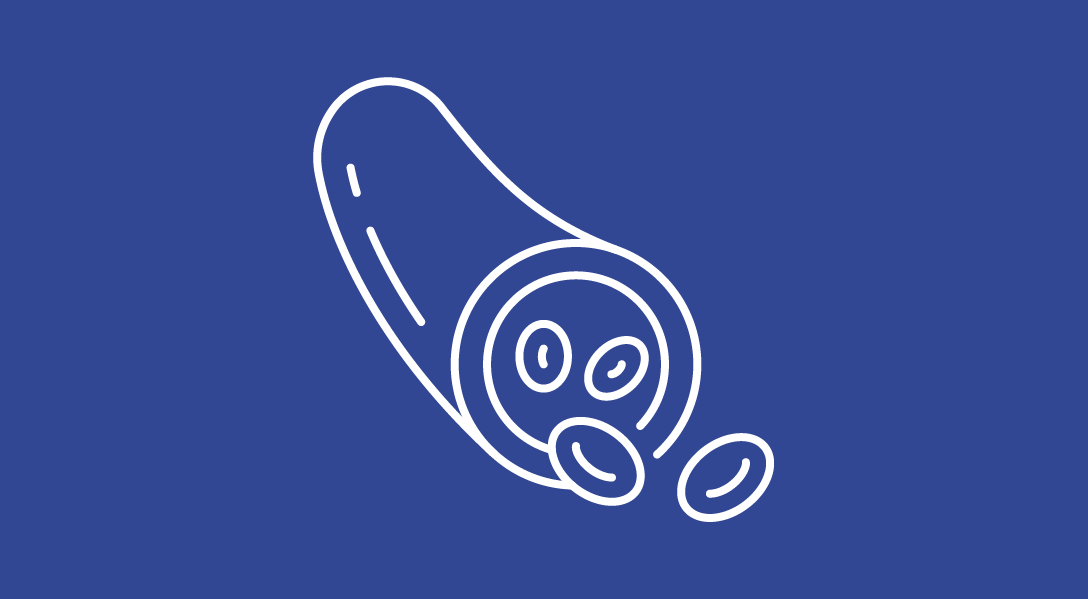Methylene Blue Has Potential to Transform Mucositis Management in Head and Neck Cancer
Nurses can be empowered to advocate for methylene blue therapy as an effective oral mucositis pain relief treatment.
Amanda Brink, DNP, APRN, FNP-BC, AOCNP

Methylene blue (MB) is a versatile medication with a wide range of therapeutic applications. While oncology nurses are likely most familiar with its use in treating ifosfamide-related encephalopathy and mapping sentinel lymph nodes during breast cancer surgery, an exciting emerging application for MB is in pain management for patients with oral mucositis (OM), which involves the inflammation of oral mucous membranes.
OM is a common side effect associated with both chemotherapy and radiation therapy.1 It occurs in up to 40% of patients undergoing chemotherapy and up to 91% of patients with head and neck cancer undergoing radiation therapy.2 This condition can significantly affect a patient's quality of life, as mucosal pain is a frequent symptom of OM.1 A patient's prognosis may ultimately be impacted if they are unable to tolerate treatment, leading to the need for dose reductions or delays due to uncontrolled OM. OM can also pose a risk of infection, including bacteremia, if mucosal ulcerations become infected.1
Nurses can suggest preventive measures for patients to help reduce the risk of OM. These measures include maintaining good oral hygiene practices, such as brushing with a soft toothbrush twice daily, daily flossing, and rinsing the mouth with solutions like sodium bicarbonate.2 Dietary modifications, such as avoiding acidic or sharp foods, may be recommended. In some cases, patients at a high risk for OM may be advised to have a prophylactic gastrostomy tube (PEG tube) placed.2
Despite taking preventive measures, many patients will still need additional prescription medications for managing OM and the associated pain. Unfortunately, many commonly prescribed agents, such as sucralfate, are ineffective.1 Additionally, "magic mouthwash" regimens lack standardization in terms of their ingredients and ratios.2 For most patients dealing with severe OM, systemic opioids will be necessary for pain control, including intravenous opioids and patient-controlled analgesia.1
Insights from a Clinical Trial of Methylene Blue in Oral Mucositis Management
MB has found use as a topical treatment for managing certain painful conditions like anal fissures. Furthermore, it has been the subject of investigation for OM treatment. In a recent study published in Cancers, the authors explored the efficacy of MB mouthwash as a remedy for pain associated with OM in patients with head and neck cancer undergoing radiation therapy, with or without concurrent chemotherapy.3
This retrospective cohort study utilized the electronic medical record to identify patients assessed in the pain management department of a major academic cancer center for pain associated with OM. These patients were undergoing radiation therapy for the treatment of head and neck cancer during the period from December 2019 to December 2020. The study included patients of any age, gender, head and neck cancer diagnosis, and stage of disease. Patients undergoing radiation therapy in combination with chemotherapy or surgery were also included.
In addition to maintaining ongoing pain management strategies, including systemic analgesics and the use of other topical oral treatments, patients were given specific instructions on the use of MB. They were advised to swish and gargle 10 mL of MB oral solution for 5 minutes, then spit, repeating this process every 6 hours until they achieved pain control. The MB solution was prepared as a 0.05% dilution in either water or normal saline, provided by the pharmacy.
Outcome measures of the study included patient-reported numerical rating scale scores for oral pain on an 11-point Likert scale ranging from 0 (no pain) to 10 (worst possible pain) and changes in oral function burden (OFB), measured on a 7-point scale from 0 (normal) to 6 (the total inability to eat, swallow, or talk, with each category scored as unable = 2, difficult = 1, and able = 0). The incidence, indication, and timing of PEG tube placement were also recorded.
The study included 58 adult patients, all of whom were already receiving topical treatment and opioid analgesics for OM pain. Using the National Cancer Institute Common Terminology Criteria for Adverse Events, all patients had grade 3 mucositis. Most patients (n=42, 72%) experienced a reduction in their pain level of greater than 5 points, with 11 patients (19%) having a pain reduction of 2-5 points and 5 patients (9%) having a pain reduction of less than 2 points. The mean pain score was 7.59 before methylene blue therapy and 2.05 after, resulting in a mean pain score reduction of 5.53 points. Notably, most patients (n = 49 [84%]) reported maximum pain relief within the first 2 doses of MB, within 12 hours of starting therapy. Five patients reported maximum pain relief after 3 to 4 doses, within 24 hours of starting therapy.
The mean OFB score before MB therapy was 3.55 (SD, ± 1.33; median, 3.5), and after MB, this had decreased to 0.52 (SD, ±0.86; median, 0). The mean OFB score reduction was 3.03 (SD, ±1.54; median, 3; P < .0001).
Eleven patients (19%) had PEG tubes placed before starting MB therapy. Of these patients, 4 (36%) were able to eat by mouth after pain was controlled using MB. Two patients (3.44%) had PEG tubes placed after initiating MB therapy.
Nursing Considerations
Oncology nurses are often the first to know when a patient is suffering from OM. Patients may share their symptoms while in the clinic or contact the triage nurse with OM symptoms. Oncology providers may also rely on their nursing colleagues to make suggestions for patient management based on a patient’s symptom burden. For patients with refractory OM, nurses may consider suggesting MB as an option for pain control.
Nurses can also advise patients on potential side effects of MB therapy. Patients should be warned that, as the name implies, MB will cause the mouth to be temporarily stained blue. Some patients may also experience an oral burning sensation while using methylene blue, particularly during the first treatment.3
This study demonstrates that MB could be a promising breakthrough in pain relief for patients with head and neck cancer undergoing radiation therapy. The encouraging outcomes, including significant pain reduction and improved oral function, underscore the potential of MB as a valuable addition to existing treatment modalities.
References
- Lalla RV, Brennan MT, Gordon SM, Sonis ST, Rosenthal DI, Keefe DM. Oral mucositis due to high-dose chemotherapy and/or head and neck radiation therapy. J Natl Cancer Inst Monogr. 2019;2019(53):lgz011. doi:10.1093/jncimonographs/lgz011
- Brown TJ, Gupta A. Management of cancer therapy-associated oral mucositis. JCO Oncol Pract. 2020;16(3):103-109. doi:10.1200/JOP.19.00652
- Roldan CJ, Rosenthal DI, Koyyalagunta D, Feng L, Warner K. Methylene blue for the treatment of radiation-induced oral mucositis during head and neck cancer treatment: an uncontrolled cohort. Cancers (Basel). 2023;15(15):3994. doi:10.3390/cancers15153994
ASTRO Issues Guideline Defining the Role of Radiation Therapy in HPV-Associated OPSCC
July 12th 2024The clinical practice guideline from the American Society for Radiation Oncology focuses on the use of definitive and postoperative radiation therapy in patients with HPV-associated oropharyngeal squamous cell carcinoma.



